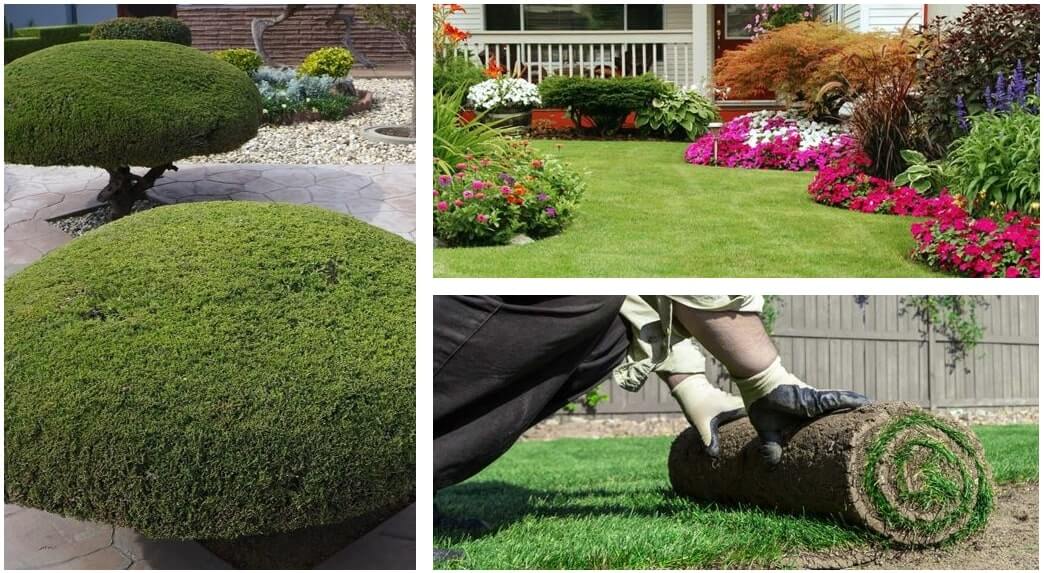Landscaping, an art form dating back centuries, transforms outdoor spaces into breathtaking works of beauty and functionality. From ancient Persian gardens to the formal gardens of Europe, landscaping, irrigation, and patio design have evolved into vital aspects of modern living. Today, it goes beyond mere aesthetics, offering environmental benefits and enhancing property value.
Whether you seek a tranquil retreat or a vibrant social hub in your backyard, landscaping can turn your vision into reality. With the right landscape ideas, design elements, and plant selections, you can create an outdoor oasis that suits your lifestyle and preferences. Join us as we explore the world of landscaping industry and unlock the potential of your outdoor space.
Key Takeaways
- Prioritize easy maintenance in landscaping to save time and effort.
- Opt for low-care shrubs and bushes to reduce the need for constant attention.
- Add colorful flowers to your garden for a vibrant and visually appealing landscape.
- Choose long-living trees for durability, providing lasting beauty and structure.
- Incorporate season-long blooming plants for continuous bursts of color and interest.
- Diversify plant selection for an aesthetically pleasing and dynamic garden.
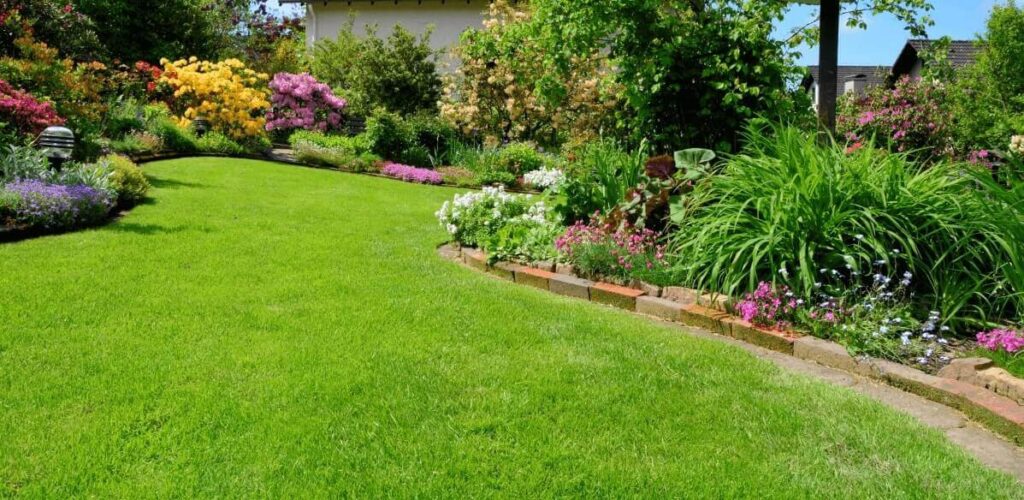
Table of Contents
Importance of Easy Maintenance in Your Landscape Ideas
Simplify Routine
Simplify your landscaping routine by selecting low-maintenance plants that require minimal care. Opt for drought-resistant species to reduce watering needs and save time.
When choosing plants, consider options like succulents, native grasses, or perennials that thrive with little intervention in water management. These choices not only beautify your outdoor space but also cut down on maintenance tasks.
To further streamline your landscaping efforts, group plants with similar water and sunlight requirements together. This practice ensures efficient watering and reduces the need for constant adjustments.
Reduce Time and Effort
Opting for easy-care landscaping solutions helps you reduce the time and effort spent on upkeep tasks. By incorporating hardy plants that can withstand various conditions, you minimize the need for frequent replacements.
Consider using mulch to retain moisture, water, suppress weeds, and regulate soil temperature. Mulching not only aids in plant health but also decreases the time spent on weeding.
Incorporating hardscaping elements such as gravel paths or stone patios can significantly decrease maintenance demands. These features add visual interest while requiring minimal attention over time.
Enhance Outdoor Beauty
Enhance the beauty of your outdoor space with low-maintenance landscaping strategies that prioritize aesthetics alongside ease of care. Incorporate a variety of textures, colors, and heights to create visual interest without increasing maintenance needs.
By selecting evergreen shrubs or trees, you ensure year-round appeal without the hassle of seasonal pruning or leaf cleanup. These plants provide structure and greenery regardless of the season.
Utilize decorative elements like ornamental grasses, rock gardens, or water-efficient features to elevate your landscape design while promoting sustainability. These additions enhance visual appeal while reducing water consumption.
Selecting Low-Care Shrubs and Bushes in Your Landscape Ideas
Optimal Varieties
When choosing shrubs and bushes for your landscaping, prioritize low-care options that require minimal upkeep. Look for varieties that need minimal pruning and watering to thrive effectively. Opt for plants that can withstand various weather conditions without constant attention.
Selecting low-care shrubs and bushes is crucial for maintaining a beautiful landscape with minimal effort. These plants not only add structure and greenery to your outdoor space but also require less maintenance over time. By opting for low-maintenance varieties, you can enjoy a visually appealing garden without the need for constant care.
Climate Considerations
Consider the specific climate of your region when selecting shrubs and bushes for your landscaping. Choose plants that are well-suited to thrive in the local weather conditions, reducing the need for extensive maintenance. Opt for species that are native to your area or those known to adapt well to the climate. Here is an entire list of recommended native North Carolina plants and a complete plant resource guide.
Pros:
- Low-care shrubs require minimal pruning and watering.
- They add structure and greenery effortlessly.
- Thrive in specific climates for easy maintenance.
Cons:
- Limited variety of low-care options available.
- Some low-care shrubs may have slower growth rates.

Practical Landscape Ideas and Tips
When thinking of landscape ideas and planning your landscaping design, incorporate a mix of low-care shrubs and bushes strategically throughout the space. Group plants with similar care requirements together to simplify maintenance tasks. Consider factors like sunlight exposure, soil quality, and water availability when deciding on plant placement.
- Begin by researching shrubs and bushes that are known for their low-maintenance qualities.
- Consult with local nurseries or gardening experts to get recommendations tailored to your specific climate.
- Prioritize planting native species that are naturally adapted to thrive in your region’s environment.
- Regularly monitor the health of your shrubs and bushes to address any issues promptly and prevent potential problems.
Enhancing Gardens with Colorful Flowers
Incorporating Variety
Introduce a diverse range of flowering plants to your garden to create a vibrant and visually appealing outdoor space. Mix different types of blooms to add splashes of color throughout your landscape. Consider incorporating flower beds and plant boxes for a layered effect.
Add interest to your garden by selecting plants that bloom at different times of the year. This ensures a continuous display of colors and keeps your outdoor space looking fresh and lively. Choose flowers that thrive in your specific climate and soil conditions for optimal growth and beauty.
Create depth and dimension in your garden by planting flowers of varying heights. Tall blooms like sunflowers or hollyhocks can provide a striking backdrop, while shorter flowers such as petunias or pansies can be used as colorful ground cover. This layering effect adds visual interest and makes your garden more dynamic.
Attracting Pollinators
By planting a variety of colorful flowers, you can attract beneficial pollinators like bees, butterflies, and hummingbirds to your garden. These creatures play a crucial role in pollination, helping plants reproduce and produce fruits or seeds. Invite these pollinators into your garden by providing them with a diverse selection of nectar-rich blooms.
Create a welcoming habitat for pollinators by including native flowering plants in your garden. Native species are well-adapted to the local environment, making them attractive food sources for local pollinators. By supporting these essential insects and birds, you contribute to the overall health of your ecosystem.
Enhance the beauty of your outdoor space while also supporting biodiversity by planting flowers in various colors, shapes, and sizes. Different pollinators are attracted to different types of blooms, so a diverse flower selection can ensure that your garden becomes a bustling hub of activity for bees, butterflies, and other beneficial insects. Here is a complete list of North Carolina annual and perennial flowers.
Maintenance Tips
To keep your colorful flower garden looking its best, make sure to provide adequate care and maintenance. Regularly water your plants, especially during dry spells, to ensure they receive sufficient moisture for healthy growth. Consider using organic fertilizers to nourish your flowers without introducing harmful chemicals into the environment.
Prune dead blooms regularly to encourage new growth and prolong the flowering season. Removing spent flowers not only improves the appearance of your garden but also redirects the plant’s energy towards producing new blooms. Monitor for any signs of pests or diseases and take prompt action to protect your plants from damage.
Incorporate mulch around your flower beds to help retain moisture, suppress weeds, and regulate soil temperature. Mulching also adds a neat finishing touch to your garden while providing additional nutrients as it breaks down over time. Following these maintenance tips ensures that your colorful flower garden remains healthy and vibrant throughout the growing season.
Choosing Long-Living Trees for Durability
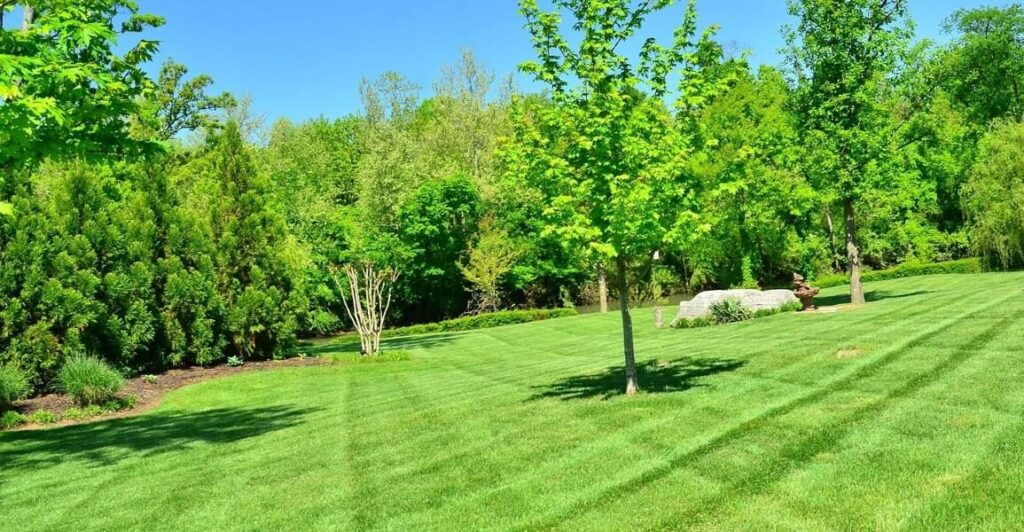
Selecting Trees
When choosing trees for your landscape ideas, opt for species known for their longevity and resilience. Look for varieties that can withstand various weather conditions and thrive with minimal care. Consider trees like oak, maple, or cedar which are renowned for their durability.
To ensure your landscape remains vibrant with minimal effort, prioritize trees that require minimal maintenance. Low-maintenance trees not only save you time and effort but also contribute to the overall aesthetics of your garden. Species such as Japanese maple or flowering dogwood are excellent choices for a beautiful yet low-maintenance landscape.
For a landscape that exudes elegance and longevity, focus on selecting trees that provide lasting beauty. Trees like magnolia, ginkgo biloba, or cherry blossom offer not only visual appeal but also stand the test of time. These species add a touch of sophistication to your garden while requiring little upkeep.
Enhancing Durability
To enhance the durability of your landscape, choose long-living tree species that can withstand the test of time. By incorporating these resilient trees into your garden design, you create a sustainable and enduring environment. The presence of long-living trees adds depth and character to your landscape while ensuring its longevity.
When integrating long-living trees into your landscape design, consider the core values of sustainability and resilience. These values guide you in selecting tree species that align with your vision for a durable and long-lasting garden. By prioritizing these core values in tree selection, you create a harmonious and resilient outdoor space.
Incorporating long-living trees not only enhances the visual appeal of your landscape but also contributes to its ecological balance. These trees provide habitats for wildlife, improve air quality, and contribute to the overall well-being of the environment. By choosing trees based on their longevity and durability, you create a thriving ecosystem within your own backyard.
Benefits of Season-Long Blooming Plants

Continuous Blooms
Enjoy the beauty of your garden year-round with plants that bloom continuously, adding color and vibrancy to your outdoor space. Whether it’s spring, summer, fall, or winter, these plants are must-have landscape ideas to ensure a visual feast for your eyes.
Create a dynamic landscape by incorporating season-long blooming plants. These varieties not only provide a stunning visual display but also attract beneficial insects like bees and butterflies, contributing to a healthy ecosystem in your garden.
Enhance the aesthetic appeal of your outdoor space with the diverse range of colors and textures that season-long blooming plants offer. From vibrant reds and yellows to soothing blues and purples, these plants add depth and interest to your garden throughout the year.
Low Maintenance
Opt for season-long blooming plants to reduce the need for constant replanting and maintenance in your garden. These hardy varieties require minimal care while providing maximum visual impact, making them an ideal choice for busy homeowners.
Embrace the convenience of having a garden that blooms consistently without the hassle of replanting each season. With season-long blooming plants, you can sit back and relax as your garden transforms into a colorful oasis that requires little upkeep.
Say goodbye to the tedious task of replanting seasonal flowers and hello to a low-maintenance garden filled with beautiful blooms all year round. Season-long blooming plants not only save you time and effort but also ensure a stunning display without constant intervention.
Environmental Benefits
By choosing season-long blooming plants, you contribute to promoting biodiversity in your local ecosystem. These plants attract pollinators such as bees and butterflies, playing a crucial role in supporting plant reproduction and maintaining a healthy environment.
Create a sustainable garden that supports local wildlife by planting season-long blooming varieties. These plants not only beautify your outdoor space but also serve as essential food sources for pollinators, helping to preserve biodiversity in your community.
Attracting beneficial insects with season-long blooming plants is not only visually appealing but also environmentally friendly. By fostering habitat for pollinators in your garden, you play a part in conserving essential species while enjoying the beauty of nature right at home.
Aesthetic Value of Diverse Plant Selection
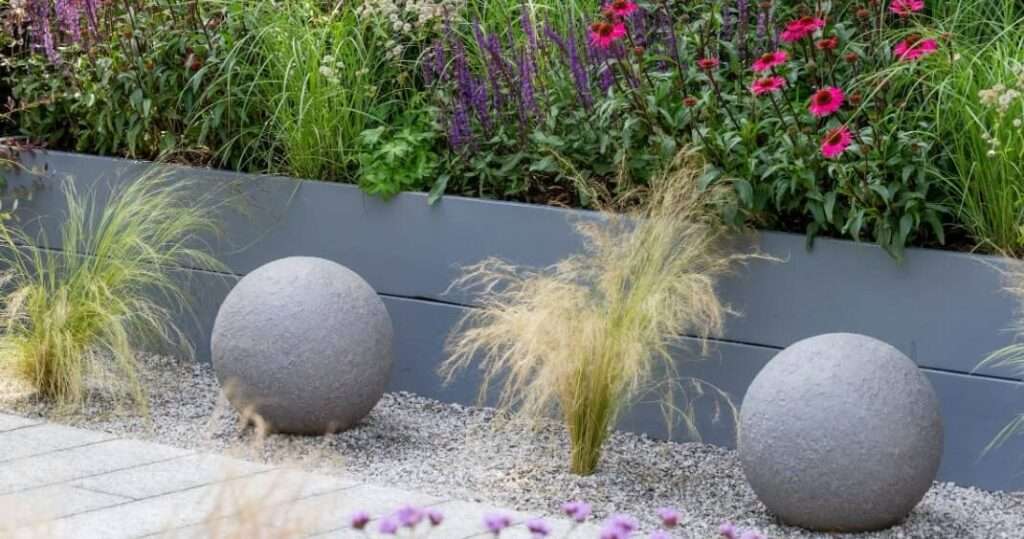
Enhancing Visual Appeal
Incorporate a variety of plants among your landscape ideas to elevate the visual appeal of your landscape. Mixing different plant types can create a dynamic and engaging garden that captures attention.
Diverse plant selection not only adds color but also brings texture and depth to your outdoor space. By combining different foliage shapes, sizes, and colors, you can achieve a visually striking and captivating garden design.
Integrating plants with varying blooming seasons ensures that your garden remains vibrant throughout the year. This constant cycle of blooms creates an ever-changing landscape that is both visually appealing and engaging.
Creating Balance and Harmony
Achieve a sense of balance and harmony in your garden by incorporating a diverse range of plants. By carefully selecting complementary plant varieties, you can create a cohesive and unified landscape design.
Mixing flowering plants with evergreens, grasses, and shrubs adds layers of interest to your garden. This diverse composition not only enhances the aesthetic appeal but also provides a habitat for beneficial insects and wildlife.
Consider the different heights, textures, and forms of plants when designing your landscape. By strategically placing tall trees, mid-sized shrubs, and ground cover plants, you can create a visually balanced and harmonious outdoor environment.
Overall Aesthetic Enhancement
Elevate the overall aesthetic of your outdoor space by embracing a diverse plant selection. Incorporating a mix of perennials, annuals, bulbs, and ornamental grasses can transform your garden into a stunning visual display.
Create focal points within your landscape by featuring unique or standout plant specimens. These eye-catching elements draw attention and add interest to specific areas, enhancing the overall aesthetic appeal of your garden.
Enhance the mood and atmosphere of your outdoor space by selecting plants with different colors, scents, and textures. A well-curated blend of plant varieties can create a tranquil retreat or an energizing oasis right in your backyard.
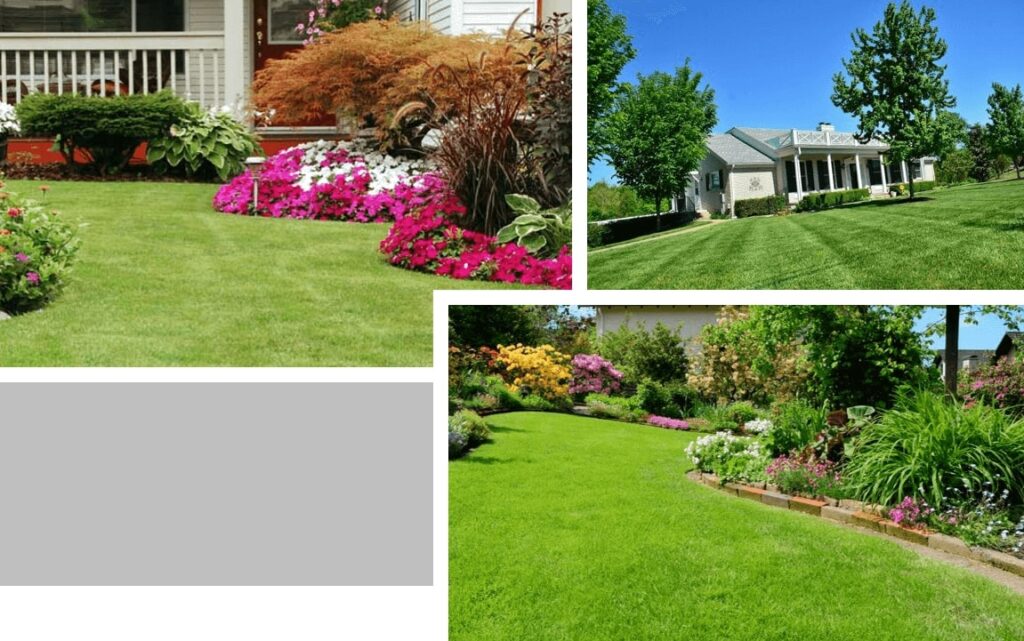
Year-Round Lawn Care for a Healthy Garden
Essential Tasks
Mow Regularly: Maintaining a well-kept lawn involves regular mowing to keep the grass at an optimal height, typically around 2-3 inches. This practice helps promote healthy growth and prevents weed infestations.
Watering Needs: Proper hydration is crucial for your lawn’s health. Water deeply but less frequently to encourage deep root growth, especially during hot summer months. Consider investing in a sprinkler system for efficient watering.
Fertilization Schedule: Establish a consistent fertilization routine throughout the year to provide essential nutrients for the soil and grass. Opt for slow-release fertilizers to ensure gradual nutrient absorption and long-term benefits.
Seasonal Lawn Maintenance
Throughout the season, the aim is to have a consistent and timely seasonal lawn care program that includes fertilizers, topsoil application, lawn maintenance, winter cleanup, and spring preparation. You’ll be amazed at the type of lawn that can be achieved with ongoing lawn care. If we can help you, give us a call at 919-796-1633 and we’ll provide a quote and walk through the annual service plan.
Spring Care: In spring, focus on tasks like aerating the soil, overseeding bare patches, and applying a balanced fertilizer to kickstart growth after winter dormancy. This season sets the foundation for a lush summer lawn.
Summer Protection: During the hot summer months, adjust your watering schedule to prevent drought stress. Consider mulching around trees and plants to retain moisture in the soil, reducing water evaporation.
Fall Preparation: Prepare your lawn for winter by aerating, dethatching, and applying a potassium-rich fertilizer to strengthen roots before colder temperatures set in. Fall maintenance sets the stage for healthy spring regrowth.
Troubleshooting Tips
Weed Control: Combat invasive weeds by regularly inspecting your lawn and manually removing them. Consider using herbicides sparingly and opt for organic weed control methods where possible.
Pest Management: Monitor your lawn for signs of pests like grubs or insects that can damage grass roots. Implement natural pest control methods or seek professional assistance if infestations persist.
Disease Prevention: Prevent fungal diseases by ensuring proper air circulation through regular aeration, avoiding overwatering, and promoting good drainage in your yard. Treat any signs of disease promptly to prevent spread.
Incorporating Hardscaping for Visual Appeal
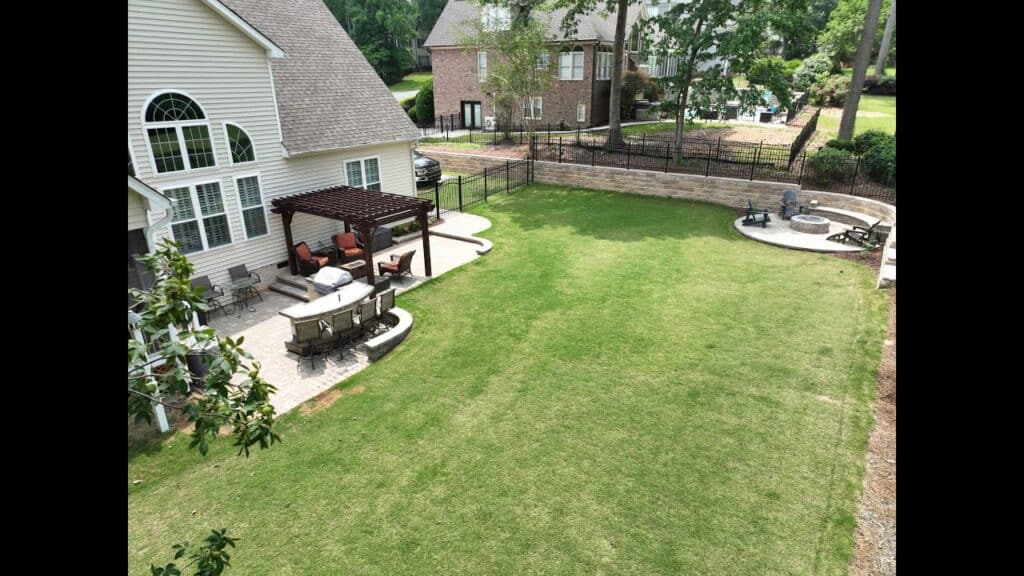
Visual Interest
Enhance your landscape by incorporating hardscaping elements such as stone pathways, retaining walls, and patios. These features add structure and visual interest to your outdoor space.
Create a focal point in your garden with a juniper landscaping wall or a decorative rock garden. These elements not only enhance the aesthetic appeal but also provide a sense of balance and harmony to the overall design.
Consider adding water features like fountains or ponds to bring a sense of tranquility to your yard. These elements not only look visually appealing but also create a soothing ambiance for relaxation.
Structural Design
Integrate hardscaping into your landscape design to define different areas within your outdoor space. Use materials such as pavers, gravel, or concrete to create distinct zones for dining, lounging, or gardening.
Utilize hardscaping features like pergolas or arbors to provide shade and structure to your outdoor living areas. These elements not only define spaces but also add architectural interest to your landscape.
Incorporate hardscaping solutions like fire pits or outdoor kitchens to extend the functionality of your outdoor space. These additions not only enhance the visual appeal but also increase the usability of your yard for entertaining and relaxation.
Planning and Implementation
Before embarking on any hardscaping projects, carefully assess your terrain and consider factors such as drainage, sun exposure, and existing vegetation. This evaluation will help you determine the most suitable hardscaping elements for your landscape.
Consult with a professional landscaper or designer to create a cohesive hardscaping plan that complements your existing landscape design. Their expertise can help you select the right materials and features that align with your aesthetic preferences and budget.
When implementing hardscaping projects, pay attention to details such as proper installation techniques, maintenance requirements, and long-term durability. Ensuring that these elements are addressed will help preserve the beauty and functionality of your hardscape features over time.
Pruning Tips for Plant Health and Shape
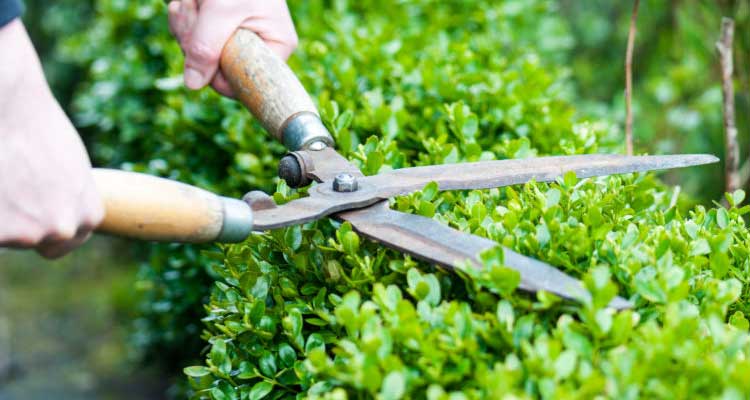
Proper Techniques
Pruning is essential for plant health and shape. To ensure optimal growth, always use sharp, clean tools to make precise cuts. Improper cutting can lead to disease or stunted growth. Remember to remove dead or diseased branches to promote new growth.
Regularly inspect your plants for any signs of damage or disease. By promptly addressing these issues through pruning, you can prevent the spread of infections and maintain the overall well-being of your garden.
Timing Matters
Timing plays a crucial role in pruning. Different plants require pruning at specific times of the year based on their growth patterns. For instance, flowering shrubs are best pruned after they bloom to avoid cutting off next season’s flowers.
Understanding the seasonal needs of your plants is key to successful pruning. Research the ideal timing for each type of plant in your garden to maximize their health and appearance.
Shaping Techniques
Proper shaping techniques are vital for maintaining the aesthetic appeal of your garden. Use selective pruning to encourage desirable growth patterns and enhance the overall appearance of your plants.
When shaping your plants, consider the natural form of each species and prune accordingly. Avoid over-pruning, as this can weaken the plant and leave it vulnerable to pests and diseases.
Landscape Ideas to Manage Weeds to Maintain Garden Beauty
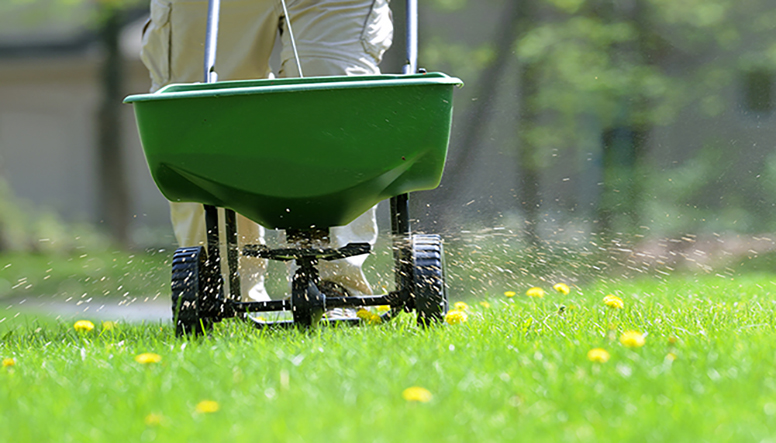
Identifying Weeds
Weeds can quickly overtake a garden, competing with desirable plants for space, nutrients, and sunlight. Common weeds like dandelions and crabgrass spread rapidly, making it crucial to identify them early on. Look out for broadleaf weeds with distinct characteristics like broad leaves and taproots.
Although some weeds may seem harmless at first, they can multiply within a short period, causing significant damage to your garden’s aesthetics and health. By regularly inspecting your garden and identifying these intruders promptly, you can prevent them from spreading further.
Implementing Preventive Measures
To control weed growth effectively, consider implementing preventive measures such as mulching or using landscape fabric. Mulching not only helps in suppressing weed growth but also retains moisture in the soil, benefiting your plants. Landscape fabric acts as a barrier, inhibiting weed seeds from germinating.
- Mulching: Utilize organic materials like wood chips or straw to create a protective layer that discourages weed growth.
- Landscape Fabric: Place this fabric beneath gravel paths or mulch to block sunlight and prevent weeds from sprouting.
Eradicating Weeds for a Pristine Garden
When weeds do appear in your garden, it is essential to take immediate action to eradicate them completely. Regularly weeding by hand or using tools like hoes can help keep their numbers in check. Employing herbicides selectively can target specific weed species without harming your desirable plants.
- Hand Weeding: Pull out weeds by hand, ensuring you remove the entire root system to prevent regrowth.
- Herbicides: Choose selective herbicides designed to target certain types of weeds while leaving other plants unharmed.
Final Remarks on Landscape Ideas
You’ve now learned the key elements of creating an easy-to-maintain and visually appealing landscape. By selecting low-care plants, incorporating colorful flowers, durable trees, and season-long bloomers, your garden will thrive year-round. Remember to maintain your lawn, add hardscaping for visual interest, prune for plant health, and manage weeds effectively to keep your garden beautiful.
Incorporate these tips into your landscaping plan and routine to create a vibrant outdoor space that requires minimal effort while providing maximum enjoyment. Start implementing these strategies today to transform your garden into a stunning oasis you can relish throughout the seasons.
Let GrassMaster of Wake County help you design and build the perfect landscape of your dreams. Our advanced design team will bring your ideas to life, and you decide when the landscape project is complete to your satisfaction. Call 919-796-1633 to get started today!
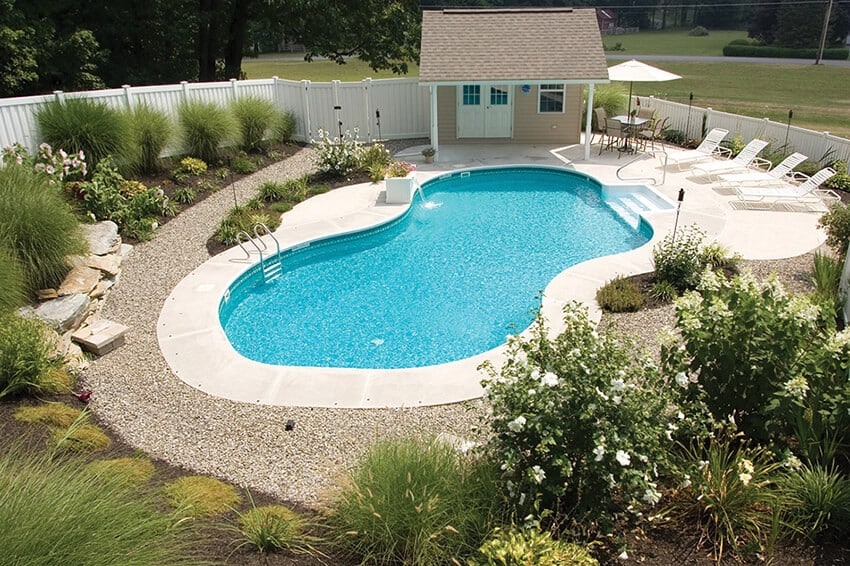
(FAQs) Frequently Asked Questions about the Best Landscape Ideas
What are the benefits of selecting low-care shrubs and bushes for landscaping?
Low-care shrubs and bushes require minimal maintenance, saving time and effort. They enhance the aesthetics of your landscape while being resilient to various weather conditions, ensuring long-lasting beauty without constant upkeep.
How can incorporating hardscaping elements enhance the visual appeal of a garden?
Hardscaping elements like pathways, patios, or decorative stones add structure and contrast to your landscape design. They create focal points, improve accessibility, and reduce maintenance needs by balancing out the softscape with durable features.
Why is it important to choose long-living trees for durability in landscaping?
Selecting long-living trees ensures a stable framework for your landscape over time. These trees provide shade, improve air quality, and contribute to the overall ecosystem while requiring less replacement and maintenance efforts in the long run.
How do season-long blooming plants benefit a garden’s aesthetics?
Season-long blooming plants offer continuous bursts of color throughout different times of the year. They create vibrant focal points, attract pollinators, and maintain visual interest in your garden, enhancing its beauty and appeal across seasons.
What are the advantages of year-round lawn care for maintaining a healthy garden?
Year-round lawn care practices such as mowing, watering, fertilizing, and aerating promote lush greenery and weed prevention. Consistent maintenance sustains soil health, encourages strong root systems in plants, and contributes to an overall thriving garden environment.


